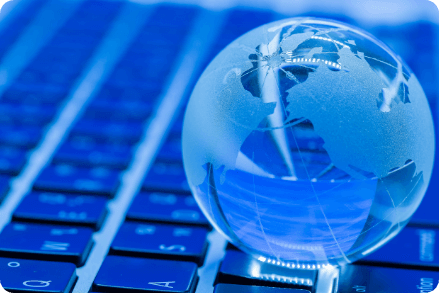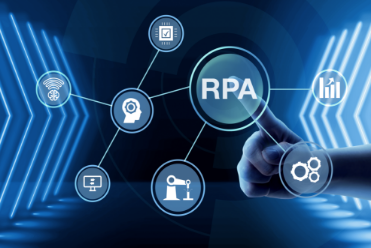The world of work is changing as a result of Robotic Process Automation or RPA Technology
-

RPA or Robotic Process Automation technology services are transforming the way that work is done. The benefits of RPA as a service is that, instead of actual humans, automated machines today carry out the monotonous and low-value operations including enrolling in systems and applications, transferring files or folders, obtaining, duplicating, and inserting data, filing papers, and producing routine analyses and reports.
-
How does RPA or Robotic Process Automation works? Advanced RPA software robots are capable of performing cognitive robotic process automation activities, including language interpretation, conversational interaction, the processing of unstructured data, and the use of cutting-edge machine learning models to make difficult judgments. Nowadays, the RPA automations are applicable anywhere in this world. When RPA software robots take over these types of repetitive, high-volume work, humans are free to focus on the things they do best and enjoy most, such as developing, collaborating, producing, and communicating with clients. Businesses also profit from increased output, effectiveness, and resilience. It makes sense why Robotic Process Automation services are altering the history of the workplace.

-

When considering RPA in Infrastructure Management across a wide range of Businesses and Processes, Robotic Process Automation services are currently creating new efficiencies and releasing employees from monotonous tasks. Businesses in industries using RPA or Robotic Process Automation services ranging from financial services to healthcare to manufacturing to public sector to retail and much beyond have embraced RPA as a service in areas as diverse as finance, compliance, legal, customer service, operations, and IT. And that is only the beginning. Because RPA as a service offers such a wide range of applications, it has become so popular.
-
RPA or Robotic Process Automation software is a great fit for any high-volume, business-rules-driven, repeatable process, and cognitive tasks that require more advanced AI capabilities are becoming suitable as well. The healthcare sector benefits the most from RPA as a service. Companies that manufacture medical devices can gain from this system by improving the quality of their goods and services while also cutting expenses. With the aid of RPA as a service, they can also raise their revenue and profitability.

-

You may easily automate your industrial operations with RPA as a service tool. Removing ineffective tasks lessens the need for physical labor and lowers costs. Your manufacturing and distribution operations can become more productive, thanks to these automated production technologies. In fact, these can raise your revenue and profitability as well. The quality of the goods and services that are sold is also improved through Robotic Process Automation or RPA as a service (RPAaaS). By reducing redundant procedures, faults, and other flaws that could impair the quality of the sold goods and services, RPA service can also aid in raising their level of excellence.
-
Additionally, the system has the power to raise your company's profitability. This is possible because you can lower the costs associated with manufacturing the goods and providing the services. Reducing the amount of manual labor needed in manufacturing and retail operations with Robotic Process Automation or RPA as a service (RPAaaS) will increase the productivity and profitability of your production line. By cutting costs and raising productivity, the system can improve the effectiveness of the production process.

-

Robotic Process Automation in Banking
Banks can use RPA to benefit from the following benefits as the complexity of financial operations increases:
-

Cost-effectiveness: Banks and financial institutions can cut processing costs and time by up to 50% by automating repetitive processes.
-
-
-

Increased customer satisfaction and service: By implementing RPA to handle repetitive tasks, staff members can concentrate on key company operations and offer clients a consistently improved experience.
-

Growth with legacy data: The application of RPA closes the gaps between processes by integrating crucial legacy and new data into one system. Additionally, this makes it possible for banks to produce reports more quickly and with greater depth to support corporate expansion.
-

Improved internal processes and activities thanks to the implementation of RPA are now more accurate, productive, and operationally efficient.

-
-

Robotic Process Automation in Healthcare
A manually managed procedure typically takes three to seven weeks and is prone to human error. Coding and billing processes can be greatly accelerated with automation, which also improves accuracy. Faster and more precise coding ensures that no money is lost and leads to a quicker payout. A consumer-focused appointment system provided by the Bots gave the patients more control.
-
The Bots, which were created to communicate with a legacy system, can change or even cancel appointments as well as determine patient eligibility and the location of the closest retailers. The core components of healthcare revenue cycle management are medical coding and billing. They assist in gathering and classifying patient data that govern medical care and insurance company billing. Management of claims is essential for hospitals and clinics. Manual tasks that involve accessing systems and data frequently result in mistakes, delays, and oversight that force resubmissions.

-

The team will have less work to do by automating routine chores like data management, verification, and report preparation, freeing them up to work on more crucial areas. Moving data between the area where users input and interact with the data and the databases where the information is normally stored is one of the use cases for RPA in the healthcare industry. These can help healthcare organizations by improving payments, facilitating access to clinical paperwork, and freeing up front-line staff through self-service.
-
How RPA could assist existing systems in extracting healthcare records and patient data and routing it to the human employees that need to use it Self-Service Terminals for Hospitals: By using an RPA tool, an employee-driven process might be transformed into a self-service station that patients or clients can utilize independently. Payroll and Healthcare Credentials Processing: When RPA is used in conjunction with other technologies, it may be possible to process employee credentials, timecards, and other payment information more quickly.

RPA as a Service across Businesses
Applications of Robotic Process Automation (RPA) Technology
-

Robotic Process Automation or RPA as a service is a technique for automating high-volume repeated processes that mimics how humans interact with software. RPA technology generates software programs or bots that can log into apps, enter data, compute and finish tasks, and copy data between apps or workflows as needed.
-
When AI and machine learning are combined, Robotic Process Automation services can extract more contexts from the content it's working with by reading text or handwriting with optical character recognition (OCR), extracting entities like names, invoice terms, or addresses using natural language processing (NLP), and capturing more contexts from images, such as automatically estimating accident damage in an insurance claim picture.

-

One of the benefits of RPA technology is that, it may be implemented without the need for business units to learn new tools or seek IT support and without modifying an organization's underlying IT architecture. However, as RPA as a service becomes more widespread, businesses are planning and seeing the necessity to integrate RPA or Robotic Process Automation software tools into their IT systems.
-
RPA or Robotic Process Automation services are gaining traction due to its ability to cut costs, streamline processes, and improve user experiences. The future of RPA is integrated, intelligent and intuitive. RPA technology needs better signal intelligence, dynamic feedback loops, and more contextual relevance in the future.

Benefits of RPA
-
Reduce workload
-
Makes processes more efficient
-
Reduce operational costs
-
Improve compliance
-
Increase reliability
-
Track progress of projects
-
Optimise performance
-
Mitigate fraud
-
Eliminate human error
Industries of RPA
Frequently Asked Questions
How does robotic process automation work?
Workflows are streamlined through robotic process automation, which helps businesses become more profitable, adaptable, and responsive. Reducing menial duties from their workdays, also boosts employee satisfaction, engagement, and productivity.
Why is RPA important?
RPA bots can be taught to complete monotonous, repetitive activities quicker and more accurately than people ever could, increasing speed, quality, and production. Increase the value of big data since many firms are producing so much of information that they are unable to handle it all.
How RPA helps businesses?
RPA modernizes corporate procedures, streamlines operations, and establishes uniformity throughout the company. You can automate essential business activities, manage your employees more effectively, get rid of human error, and boost operational efficiency as RPA becomes more popular.
What are the applications of RPA?
RPA is utilized in finance to automate governance, account reconciliation, and invoice processing. Data entry, predictive maintenance, and after-sales service assistance are just a few of the supply chain procedures that are automated with RPA. RPA is utilized in a variety of industries to automate repetitive, high-volume processes.
How has RPA grown in recent years?
RPA is a transactional system technology that enables the use of software robots to automate business activities ("bots"). RPA tools observe users and then perform repeated actions using a graphical user interface (GUI). Companies have started opting for RPA solutions to boost their workflows and it will grow tremendously over the years.







